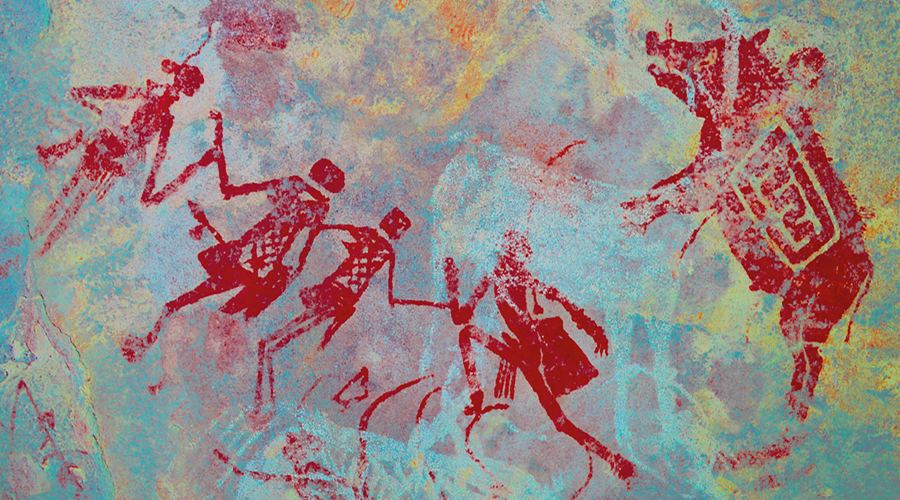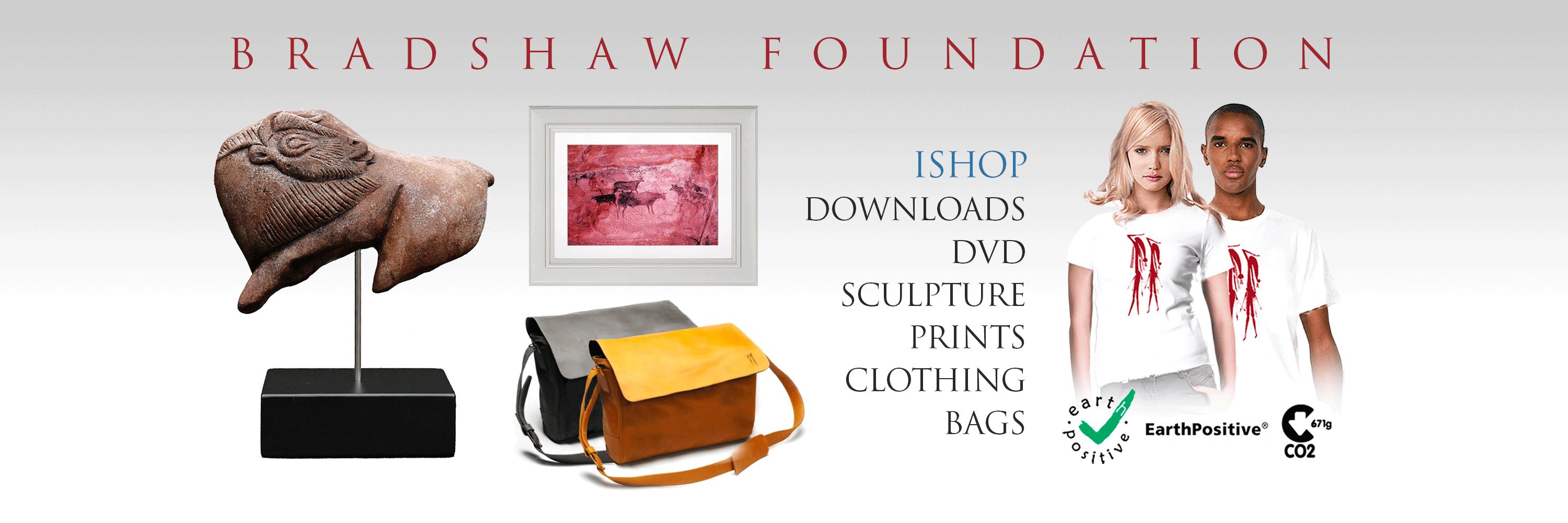


An article by Ben Collins on abc.net.au - New dating technique could reveal Australian rock art rivals the world's oldest - reports on a new scientific dating technique used on a mineral layer coating Kimberley rock art shelters which shows the rock carvings may be up to 43,000 years old — among the oldest in the world.

If the mineral layer covering rock carvings proves as old, it will be among the world's oldest dated human art. The layer is a shiny glaze on the surface of rocks in the shallow shelters, according to Helen Green, a research fellow in rock art dating at the University of Melbourne and part of a team that has worked with the Balangarra Aboriginal people. Dr Green explains "We've been able to actually date these glazes, we found they have internal layering, and we've been able to date the individual layers."
The potential to date Australian art beyond 40,000 years is an incredibly exciting result because, although evidence indicates humans arrived in Australia 65,000 years ago, rock art has not been dated to anywhere near as old. The oldest date comes from charcoal lines drawn on a rock fragment excavated from a Northern Territory rock shelter, at 28,000 years old.
The oldest painting still in place in a rock shelter was dated earlier this year: "We do know from work in this project that Australia's oldest in situ rock art is in the Kimberley, and that's of a life-sized kangaroo at 17,500 years old," Dr Green said. "But there is research to suggest that engravings are older than the painted art, so we are expecting that we might find some ages that are older than the ages that we've got at the moment."
Dr Green explains "To check that the technique worked, we have to use some of the material. We did that on off-art samples. Now that we've got the reliable results, we can apply that to the samples that we've got from the engraved art." If the mineral glaze covering the rock carvings is as old as 43,000 years, this would be among the oldest dated art anywhere in the world.
Kimberley rock art sites often consist of a range of strikingly different styles of art, and as dates for these styles are established, a picture is emerging of culture responding to climate, as Dr Green explains: "We know that Wandjina art relates to culture today, whereas the art with the life-size kangaroo dated to around 17,000 years old is the oldest rock art style at the moment and, in between, there are other styles as well. So people change what they were painting and change what they were interested in. They changed what they were wearing and what they were doing, and what we want to know is why?"
The new technique of dating the mineral glaze covering the inside of rock shelters not only provides the age of ancient art but also records what has happened to the climate in the Kimberley since that time: rapid sea-level rise, climate change, and the onset of the monsoon.
The rock carvings that are suspected to be more ancient than any of the various rock painting styles mostly consist of repeated patterns, such as little kangaroo or bird feet motifs, large expanses of parallel lines and cupules. Exactly what the patterns might signify and if they had any practical role in food preparation or weapon production is not yet known.
Dr Green suggests that with the new technique to date the ancient mineral glaze, they may be on the cusp of finally demonstrating that Australian Indigenous art in the Kimberley is as old as the world's oldest art found in caves a short distance across the Indian Ocean in Sulawesi, Indonesia.
by Bradshaw Foundation
Monday 03 February 2025
by Bradshaw Foundation
Friday 09 August 2024
by Bradshaw Foundation
Wednesday 24 July 2024
by Bradshaw Foundation
Thursday 04 July 2024
by Bradshaw Foundation
Monday 01 July 2024
by Bradshaw Foundation
Wednesday 20 March 2024
by Bradshaw Foundation
Tuesday 13 February 2024
by Bradshaw Foundation
Tuesday 13 February 2024
by Bradshaw Foundation
Thursday 01 February 2024
by Bradshaw Foundation
Tuesday 28 November 2023
by Bradshaw Foundation
Thursday 23 November 2023
by Bradshaw Foundation
Monday 20 November 2023
by Bradshaw Foundation
Tuesday 31 October 2023
by Bradshaw Foundation
Thursday 26 October 2023
by Bradshaw Foundation
Wednesday 20 September 2023
by Bradshaw Foundation
Monday 17 July 2023
by Bradshaw Foundation
Monday 03 February 2025
by Bradshaw Foundation
Friday 09 August 2024
by Bradshaw Foundation
Wednesday 24 July 2024
by Bradshaw Foundation
Thursday 04 July 2024
by Bradshaw Foundation
Monday 01 July 2024
by Bradshaw Foundation
Wednesday 20 March 2024
by Bradshaw Foundation
Tuesday 13 February 2024
by Bradshaw Foundation
Tuesday 13 February 2024
by Bradshaw Foundation
Thursday 01 February 2024
by Bradshaw Foundation
Tuesday 28 November 2023
by Bradshaw Foundation
Thursday 23 November 2023
by Bradshaw Foundation
Monday 20 November 2023
by Bradshaw Foundation
Tuesday 31 October 2023
by Bradshaw Foundation
Thursday 26 October 2023
by Bradshaw Foundation
Wednesday 20 September 2023
by Bradshaw Foundation
Monday 17 July 2023
Friend of the Foundation











